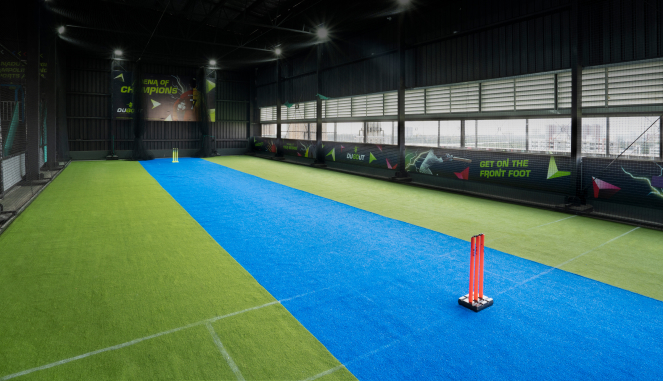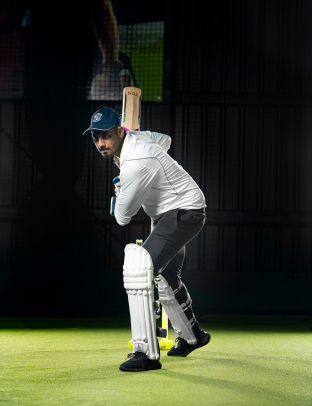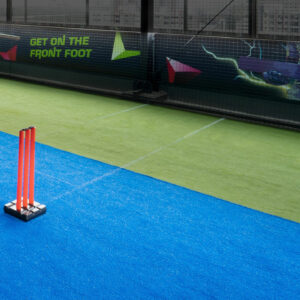
Indoor cricket is played in a confined area. It is a unique sport from conventional cricket, played in an indoor arena with a covered roof. The game's rules are similar to traditional cricket, but because it is a separate sport, there are certain distinctions. Get in touch with a sports arena that offers indoor cricket in Chennai if you wish to become a great indoor cricket player.
The history of indoor cricket is unknown; however, some believe it originated in Flensburg, Germany, in the 1960s. According to popular belief, the current format first appeared in Australia during the 1970s. In 1976, Islington hosted a national tournament in the United Kingdom. The structured style of indoor cricket came into existence in 1978 when great Australian sportsman Dennis Lillee and business partner Graham Monaghan opened a training center in Perth to coach youth cricketers. When inclement weather forced the cancellation of a match at a local oval, they moved to their indoor facility and devised some indoor cricket rules.

Because the game format was fast and thrilling, Monoghan decided to begin advertising indoor cricket to attract more customers to his center. Indoor cricket quickly gained popularity, expanding to other indoor facilities around Australia. An 8-a-side indoor cricket spinoff became a national franchise, ICA (Indoor Cricket Arenas). Before long, an estimated 200,000 individuals participated in indoor cricket at thousands of ICA stadiums throughout Australia. A national competition was held in 1984 and the International Indoor Cricket Federation was founded in 1995 by representatives from South Africa, Australia, New Zealand, and England.
The features that make indoor cricket unique include the following:
The net's purpose is to prevent the ball from exiting the field of play, but it also contains delineated scoring zones. If the batter hits into these zones, the indicated number of runs is added to the team total. Zone B is situated on both sides of the court and extends half the way down the pitch. One run is scored if the ball strikes the net in Zone B. Zone C is situated on either side of the wicket and extends from Zone B and it extends halfway down to the rear net. Two runs are scored if the ball strikes the net in Zone B.
Zone D is located in the extreme back, directly behind the bowler. Four runs are earned if the ball touches this and bounces. Six runs are scored if the ball touches Zone D without bouncing. Any runs obtained by striking these zones are referred to as bonus runs. Physical runs can also be scored by batsmen jogging between the wickets. If the ball lands in a scoring area, the players must make a physical run for the extra runs to be counted.
Indoor cricket international rules are critical to be emphasized. Indoor cricket is a distinct sport that differs significantly from a traditional game of cricket. Standard cricket bats are used; however, a simple version is created specifically for indoor games. One of these is the length of the wicket, which is 22 yards. A single innings contest is played between two teams of six players each. Those innings are 12 overs long. Each batter gets four overs, while each bowler gets two overs. Everyone on each side has an equal opportunity to participate.

Using traditional dismissal tactics, gamers can be caught, bowled, and run out. When a batsman is dismissed, they remain in the match until their four overs are used up. Every dismissal subtracts five runs from the team's total. As with conventional cricket, the goal is to achieve more scores than the opposition. When batting, try to maintain the ball down. If the ball hits special zones B or C, you can be caught by the fielders. Batsmen can be bowled and run out, so it is necessary to be mindful of the ball and exercise caution when running between the wickets.
Also Read: Benefits of Trampoline for Kids
The law governing bonus runs is the most crucial factor in indoor cricket. For fielders, remember that you're still a part of the match even if the ball reaches one of those scoring areas. A genuine run must be taken in order for the additional point to count. So don't sit back and enjoy your smash as it hits the net. Batsmen may get run out if the ball is still in the air.
Wrap Up
In an indoor cricket ball, the ball swings better when thrown by a medium-fast bowler than a fast bowler, which is a notion rather than a proven truth! It's a fast-paced game, so stay aware at all times. Physical fitness is vital! Since indoor cricket is fast, avoid participating if you are injured. Wait until you are fully fit again. Contact Dugout Trampoline and Sports arena in Chennai to learn indoor cricket in the most professional way.